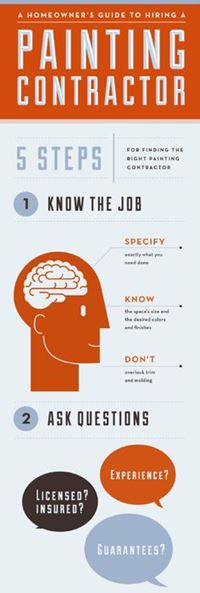Seasonal Factors To Consider For Industrial Exterior Paint: What You Required To Know
Seasonal Factors To Consider For Industrial Exterior Paint: What You Required To Know
Blog Article
Short Article Writer-Regan Celik
When you're intending an industrial outside paint task, seasonal factors can make or break your outcomes. You'll wish to think about exactly how temperature level and moisture influence paint application and drying times. Picking the right season can guarantee your paint sticks effectively and lasts much longer. But which periods are absolutely the most effective for this type of work? Allow's check out the key elements that can affect your job's success.
The Effect of Temperature Level on Paint Application
When you're preparing an industrial outside paint task, the temperature can considerably influence exactly how well the paint adheres and dries out.
Ideally, you intend to paint when temperature levels range in between 50 ° F and 85 ° F. If it's also cold, the paint may not cure properly, leading to issues like peeling off or splitting.
On the other side, if it's too warm, the paint can dry out also swiftly, preventing correct attachment and resulting in an uneven finish.
You should likewise take into consideration the time of day; morning or late afternoon uses cooler temperatures, which can be much more beneficial.
Constantly examine the producer's referrals for the specific paint you're using, as they commonly provide advice on the ideal temperature array for optimal results.
Moisture and Its Effect on Drying Times
Temperature isn't the only ecological element that affects your commercial exterior painting task; moisture plays a considerable function also. High moisture levels can decrease drying times considerably, impacting the total quality of your paint job.
When the air is saturated with dampness, the paint takes longer to treat, which can bring about problems like bad attachment and a higher threat of mildew development. If you're painting on a particularly moist day, be prepared for extensive wait times between layers.
It's important to monitor local weather conditions and plan appropriately. Preferably, aim for humidity levels between 40% and 70% for ideal drying out.
Keeping https://dengarden.com/news/black-home-gym-paint consider mind guarantees your job remains on track and supplies a lasting surface.
Best Seasons for Commercial Exterior Painting Projects
What's the most effective time of year for your commercial outside paint jobs?
Springtime and very early loss are commonly your best options. During https://commercialpaintersnearme66655.dailyblogzz.com/34916585/discover-the-significant-function-of-home-painters-and-just-how-their-remarkable-skills-can-metamorphose-your-home-right-into-a-spectacular-artistic-creation , temperatures are light, and moisture levels are typically lower, developing optimal problems for paint application and drying.
Prevent summer season's intense heat, which can trigger paint to dry too promptly, leading to inadequate attachment and finish. Likewise, winter season's chilly temperature levels can impede proper drying out and curing, risking the longevity of your paint job.
Aim for days with temperature levels between 50 ° F and 85 ° F for ideal results. Keep in mind to examine the neighborhood weather forecast for rainfall, as damp problems can spoil your project.
Preparation around these aspects guarantees your painting project runs efficiently and lasts much longer.
Conclusion
Finally, preparing your commercial outside painting projects around seasonal considerations can make a significant distinction in the result. By organizing job during the excellent temperatures and moisture levels, you'll make sure better bond and drying times. Keep in mind to keep an eye on local weather prediction and select the right time of year-- springtime and early fall are your best bets. Taking these actions will aid you accomplish a long lasting and expert surface that lasts.
